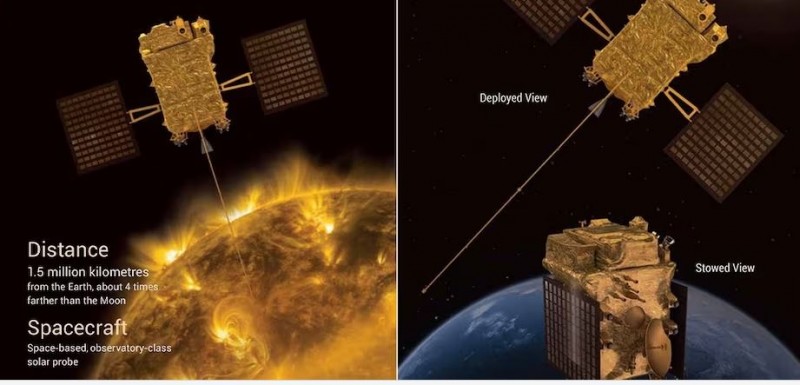
NEW DELHI: Indian Prime Minister Narendra Modi extended his heartful congratulations to the Indian Space Research Organisation (ISRO) for the successful launch of Aditya-L1, India's inaugural space-based solar observatory. He affirmed India's unwavering commitment to scientific exploration, emphasizing its crucial role in advancing our understanding of the universe for the betterment of all humanity.
Prime Minister Modi shared his appreciation for the dedicated scientists and engineers at ISRO through a social media platform, stating, "Following the triumph of Chandrayaan-3, India continues its remarkable journey into space. Kudos to our brilliant minds at @isro for the flawless launch of India's maiden Solar Mission, Aditya-L1. Our relentless scientific endeavors will persist, fostering a deeper comprehension of the cosmos for the greater good of humanity."
The momentous launch of Aditya-L1 was executed flawlessly by the PSLV-C57.1 rocket from the Satish Dhawan Space Centre in Sriharikota, Andhra Pradesh, occurring at 11.50 am today. This achievement followed closely on the heels of the historic lunar landing mission, Chandrayaan-3.
Subsequent to the launch, ISRO announced the successful separation of the payload covering the Aditya-L1 spacecraft as it departed Earth's atmosphere, marking a significant milestone. "The third stage of separation of PSLV carrying the Aditya-L1 orbiter has been completed," according to ISRO. The launch of Aditya-L1 via PSLV-C57 has been executed flawlessly, ensuring precise placement of the satellite into its intended orbit. India's premier solar observatory has embarked on its journey to the Sun-Earth L1 point, situated 1.5 million km away from Earth in the direction of the sun.
The Aditya-L1 mission is projected to reach its observation point in approximately four months, where it will be positioned in a halo orbit around Lagrangian Point 1 (L1). This strategic orbit will facilitate continuous solar observation, unhindered by eclipses or occultation, allowing scientists to monitor solar activities and their impact on space weather in real-time.
Furthermore, the spacecraft's data will contribute to identifying the sequence of events leading to solar eruptive phenomena, fostering a deeper comprehension of the drivers of space weather. The primary objectives of India's solar mission encompass the study of the physics of the solar corona and its heating mechanism, solar wind acceleration, the dynamics of the solar atmosphere, solar wind distribution, temperature anisotropy, and the origins of Coronal Mass Ejections (CME) and solar flares, all of which have implications for near-earth space weather.
The Indian Institute of Astrophysics, based in Bengaluru, highlights that the solar corona, the sun's outer atmosphere, is typically visible during a total solar eclipse. The Visible Emission Line Coronagraph (VELC), the largest and technically most challenging payload on Aditya-L1, is designed to block out the sun's disk's light, enabling continuous imaging of the much fainter corona. This groundbreaking instrument was integrated, tested, and calibrated at the Indian Institute of Astrophysics' CREST (Centre for Research and Education in Science Technology) campus in Hosakote, in collaboration with ISRO. This strategic positioning of the VELC will provide uninterrupted observations of the sun's corona, enriching our understanding of solar phenomena.